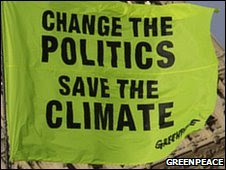
Eloqui "Voicebox"
David Edwards, Chief Executive of the Engineering Construction Industry Training Board writes about how more skills are crucial to keeping the lights on in the UK.
“The challenge of improving the UK’s infrastructure is immense. All of the UK’s main coal and nuclear power stations will need to be replaced in the next 20 years. In other areas, such as the rail network upgrade and the building of new renewable power capacity, the goal is to put the UK ahead and demonstrate we are a strong player in new technologies.
However whilst policy makers, politicians and the business community agree that significant investment is required, for me, the most immediate challenge is ensuring the UK has the skilled workforce it needs to deliver these essential projects.
It is estimated that that 50% of the country’s skilled engineering construction population will be retiring before just half of the UK’s much needed new power stations are built, and to deliver the infrastructure projects required more than 45,000 extra people need to be recruited over the next 10 years.
At the ECITB we are trying to address this issue. We work closely with schools, colleges, universities and regional organisations to attract young people into the industry and we work with a national network of over 200 training providers to ensure the highest standards are maintained throughout the industry.
To further close the skills gap we have recently unveiled plans to invest over £100 million in support of engineering construction training over the next five years. But new and imaginative thinking is required to accelerate the behaviour change needed in our skills culture. A potential solution is the creation of collective skills training funds, contributed to by both employers and government, but with initial match funding from government to promote more engagement and training.
There has been much debate about the need to rebalance the UK economy with more jobs in industry and manufacturing. However without the infrastructure, this can’t happen, and that infrastructure won’t get built without the skills.”
An abridged version of a recent article in the New Statesman
“The challenge of improving the UK’s infrastructure is immense. All of the UK’s main coal and nuclear power stations will need to be replaced in the next 20 years. In other areas, such as the rail network upgrade and the building of new renewable power capacity, the goal is to put the UK ahead and demonstrate we are a strong player in new technologies.
However whilst policy makers, politicians and the business community agree that significant investment is required, for me, the most immediate challenge is ensuring the UK has the skilled workforce it needs to deliver these essential projects.
It is estimated that that 50% of the country’s skilled engineering construction population will be retiring before just half of the UK’s much needed new power stations are built, and to deliver the infrastructure projects required more than 45,000 extra people need to be recruited over the next 10 years.
At the ECITB we are trying to address this issue. We work closely with schools, colleges, universities and regional organisations to attract young people into the industry and we work with a national network of over 200 training providers to ensure the highest standards are maintained throughout the industry.
To further close the skills gap we have recently unveiled plans to invest over £100 million in support of engineering construction training over the next five years. But new and imaginative thinking is required to accelerate the behaviour change needed in our skills culture. A potential solution is the creation of collective skills training funds, contributed to by both employers and government, but with initial match funding from government to promote more engagement and training.
There has been much debate about the need to rebalance the UK economy with more jobs in industry and manufacturing. However without the infrastructure, this can’t happen, and that infrastructure won’t get built without the skills.”
An abridged version of a recent article in the New Statesman



